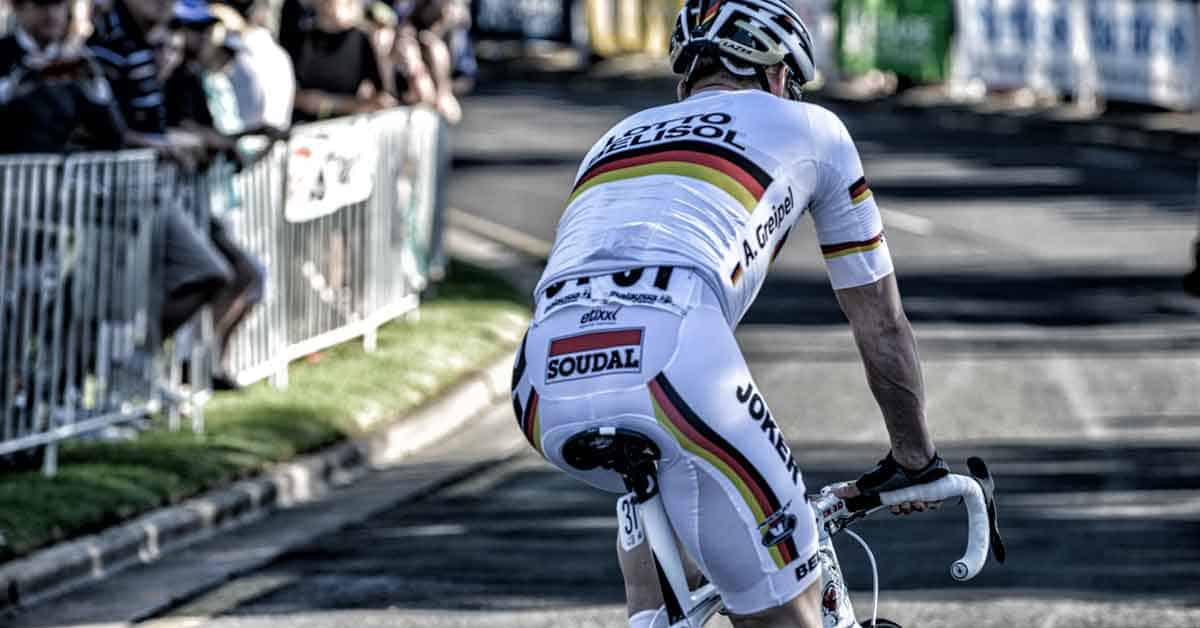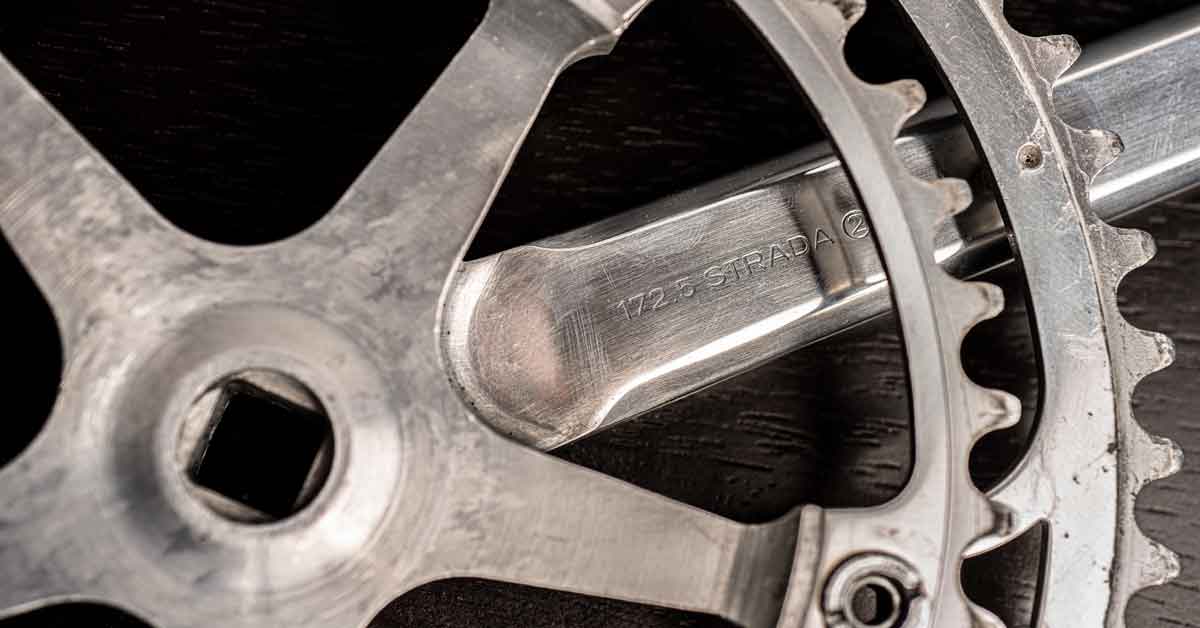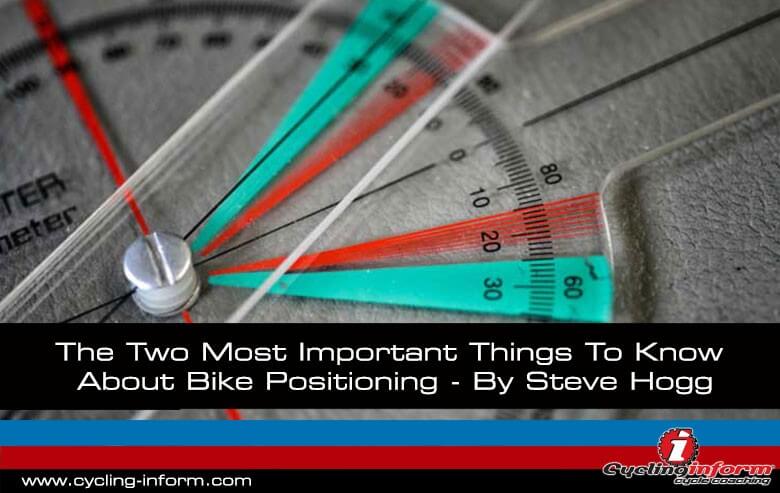Written by Steve Hogg.
Almost everyone assumes that their body is symmetrical. Though not the case this is an easy mistake to make. We look in the mirror and see two eyes, ears, nostrils, arms, legs and so on, but if we look closely this is largely a myth. You will have one hand that is larger than the other, one foot that is larger than the other, one eye that is dominant and one facile side (handedness and footedness) and one clumsy side. If we look even more closely we may have one shoulder that is higher than the other, one side of the pelvis that is higher than the other, feet with different arch shapes and degrees of pronation or supination and a host of other asymmetries. So in reality, even if we are measurably symmetrical in the sense of having limbs of the same length on both sides (and this isn’t the case for many people) we are functionally asymmetrical to varying degrees.
A bicycle is a symmetrical apparatus, at least in a positional sense. The seat is on the centreline of the frame; the cranks are of equal length and are equidistant from the centreline as are both sides of the handlebars. This means in turn that when a functionally asymmetric rider mounts his or her symmetrical bike they will always maladapt. The degree to which this occurs may be major or minor. One of the major tasks of bicycle positioning is to minimize that propensity for maladaptation by achieving the highest degree of functional symmetry possible for a rider on a bike.
Many years of experience and many thousands of subjects have taught me that no matter what the difference in leg or arm length or differences in hip, knee or ankle function between left and right sides, there is always a way to minimize the impact of this on the rider and have them in a position that allows the greatest possible functional symmetry and control of movement. With one notable exception!
Problem
That exception is pelvic asymmetries of function. On a bike, everyone favours one side of their body to varying degrees. This takes the form of a perceptible dropping and / or rotating forward of one side of the pelvis on the pedal downstroke on the affected side. For the rest, they are doing it too, but to a degree which may be imperceptible or nearly so.
Ideally positioned on a bike, the pelvis is the foundation of our position. The base of the pelvis (ischial tuberosities or ‘sit bones’) is where we should bear the majority of our weight because it costs us little in metabolic terms to bear weight that way. The torso cantilevers out from the pelvis and the legs reach down from it. If the pelvis is tilted or twisted to one side then each leg will work through a different plane of movement and reach a different distance to the pedals. The spine will bend to one side as a result and each arm will reach a different distance to the handlebars. This is the case even if there are no measurable differences in limb length.
Even on a bike we all assume left/right symmetry of function that isn’t there. Our minds picture of self is a symmetrical one but too often this isn’t the case in reality. Many riders feel the effects of this in a variety of ways. I have listed some below:
a. Having a ‘strong leg’ and a ‘weak leg’.
b. Having one hand that bears more weight than the other or tends to go numb more quickly than the other.
c. Bearing more weight on one sit bone than the other.
d. Soreness or strain in one shoulder, or side of the neck or one side of the upper back.
e. Low back pain that is more severe on one side than the other.
f. One foot that pedals turned in and one that pedals turned out
g. One knee that is noticeably further from the top tube while pedaling than the other.
h. Wearing out one side of the knicks or side of the seat.
i. A tendency to get saddle sores on one side only or with greater severity on one side.
j. Having one knee that tracks straight and another that wavers laterally.
k. Any combination of the above.
All of these things can be traced to pelvic asymmetries of function. In many cases, other factors are also involved and measurable asymmetries can be part of the picture too; one example being the simple one of differing leg lengths. However, you can almost bet that if there is a measurable asymmetry of limb length there will be functional asymmetry of pelvic function great or small associated with this.
If you are not sure whether you fit this picture here is a test. Mount your bike on an indoor trainer taking care to ensure that the bike is level. Warm up thoroughly until you can ride stripped to the waist with reasonable load, comfortably. Have an observer standing on a chair above and behind you. Reach down to the drop bars or aero bars and ask your observer whether you drop or rotate one side forward on the pedal down stroke.
How does a functional pelvic asymmetry occur?
Among the more common reasons are differing leg lengths, asymmetric patterns of tightness between left and right sides and years of poor posture that favours one side. It can also be caused by the way our brains function. I stumbled on this last after considering why from time to time I see riders who when assessed show no real differences in flexibility or functional symmetry between left and right sides off the bike, but display noticeable differences on the bike in the sense of not sitting squarely on the seat or hanging to one side. (The converse is also true. There are any number of asymmetrically tight and twisted people who once on a bike, function with greater symmetry than they do when off the bike).
My theory is this – Modern society rewards left-brain thinking; i.e. analytical, organized thinking. The left brain controls the right side of the body and riding a bike is a left-brain activity meaning that for many the signals from the left side of the brain get through loudly and more clearly than the signals from the right side of the brain. I came to this after noting that approximately 95% of the riders that display pelvic asymmetries of function favour the right side in the sense of dropping or rotating forward the right hip. This has nothing to do with the great majority of people being right-handed and right-footed because I found that the left-handed people who display functional pelvic asymmetries on a bike still had much the same 95% tendency to favour the right side in the sense of dropping or rotating that hip while pedaling.
There are riders who favour the left side and while not rare, they are far less common.
For many people that function like this, the solution is to stretch or to perform any kind of postural work that helps to even them out. For a lesser but still large number, no amount of improvement off the bike makes much difference on the bike and it is to these that this article is aimed. Also too, to the large number who will do the hard work in terms of improving their flexibility, core strength and posture but need to be able to ride symmetrically or at least more symmetrically than they currently do in the meantime.
Solution
I have tried different methods with varying degrees of success to help people achieve functional pelvic symmetry on a bike. I have twisted seat noses to point off centre, glued padded build-ups on one side of the rear of the seat, bent steel railed seats down to one side and a host of other measures that worked to varying degrees for different people. These measures always failed at some level when the rider either ramped up their training intensity or volume markedly. What I am saying is that the underlying tendency to favour one side is always there and under severe conditions will always assert itself.
Some time ago I was thinking along the lines of designing and having made seat posts where the seat rail clamp could be moved laterally. That is the seat still points straight ahead but is offset from the centerline of the bike. This would bring those riders who favour one side closer to the bike’s centreline in the sense of how they bear their weight and allow them to function and pedal in a more symmetrical fashion. I put this off because I needed 3 versions of this seat post making it an expensive exercise. I needed one post with zero offset fore and aft, one with standard offset fore and aft (standard fore and aft offset means the same as Shimano or Campagnolo seat posts where the front of the seat rail clamp bisects the centreline of the seat post shaft as viewed from the side) and one with more than standard offset fore and aft. This was so that no matter what combination of bike and rider I was positioning at the time, I would have the ability to gain both the fore and aft offset and lateral offset of the seat that I was seeking.
FSA has beaten me to it. With their new K-Force range of seat posts with Data Head, a 15-second modification of the seat rail clamp will allow up to a 12mm lateral offset to the left or right of the centreline while the seat still points straight ahead. The FSA K-Force range of posts comes in zero, standard and more than standard offset versions. They are a longitudinal two-bolt style post. There is an upper and lower piece to the seat rail clamp. Running fore and aft over the top of this 2 piece rail clamp is a curved aluminium piece with the bolts at each end. Tightening the two bolts pulls the two curved aluminium piece down onto the 2 halves of the rail clamp locking them in place. The upper half of the seat rail clamp is centred under the longitudinally curved aluminium piece by 2 small protrusions on its upper surface. If they are filed or ground off (which is easy and simple) then the rail clamp can be securely clamped on centre or offset to either side securely.
I have tried this out on a number of ‘problem children’ and best case, even though the seat is offset from the centreline of the bike, the rider is centred and symmetrical. Worst case, the seat is offset laterally but the rider, while not perfect is much closer to the goal of having a symmetrical pelvis on the bike with all the direct and indirect benefits that accrue to that.
Properly implementing this will make a positive difference to the performance, comfort and propensity for injury of many riders. In terms of positioning problems solving, for me it is the last piece of the puzzle.
Best of luck.






Leave A Comment